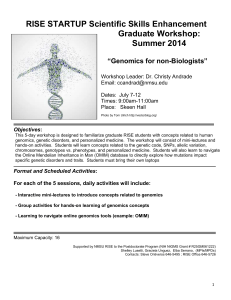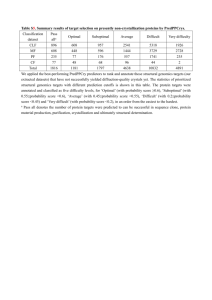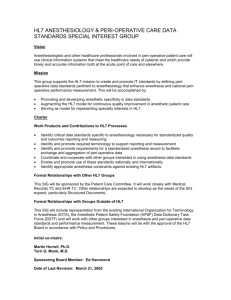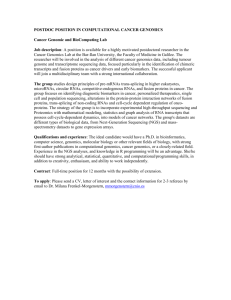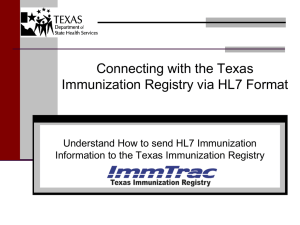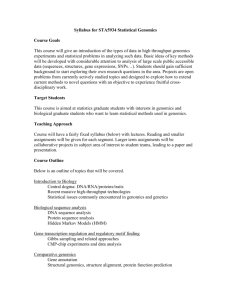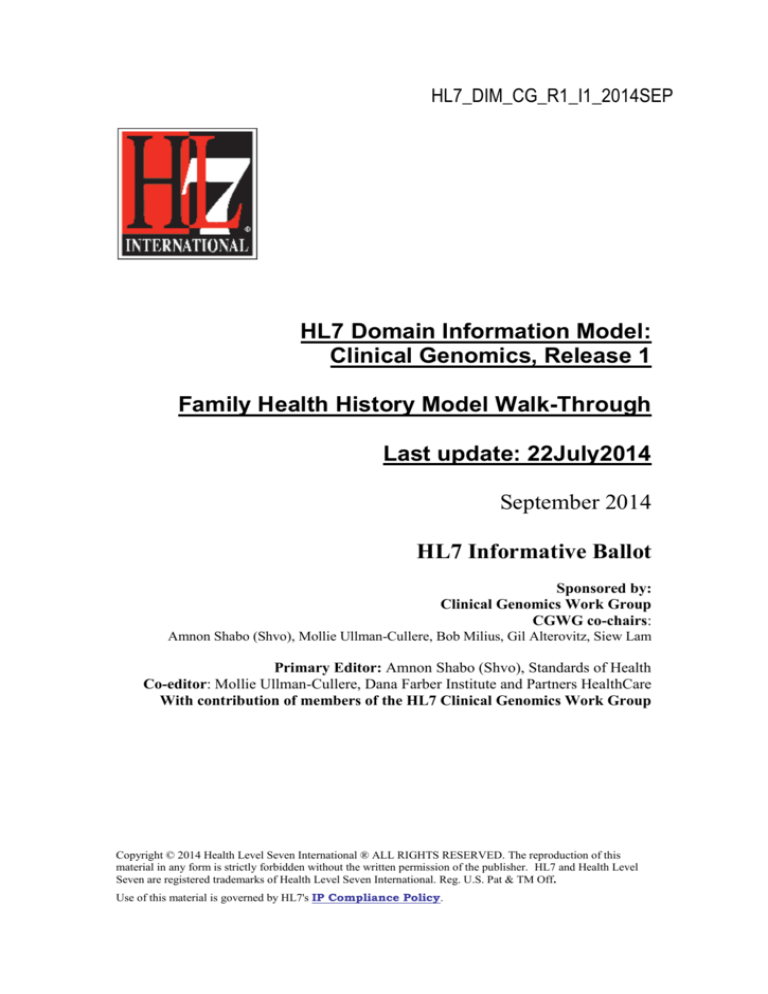
HL7_DIM_CG_R1_I1_2014SEP
HL7 Domain Information Model:
Clinical Genomics, Release 1
Family Health History Model Walk-Through
Last update: 22July2014
September 2014
HL7 Informative Ballot
Sponsored by:
Clinical Genomics Work Group
CGWG co-chairs:
Amnon Shabo (Shvo), Mollie Ullman-Cullere, Bob Milius, Gil Alterovitz, Siew Lam
Primary Editor: Amnon Shabo (Shvo), Standards of Health
Co-editor: Mollie Ullman-Cullere, Dana Farber Institute and Partners HealthCare
With contribution of members of the HL7 Clinical Genomics Work Group
Copyright © 2014 Health Level Seven International ® ALL RIGHTS RESERVED. The reproduction of this
material in any form is strictly forbidden without the written permission of the publisher. HL7 and Health Level
Seven are registered trademarks of Health Level Seven International. Reg. U.S. Pat & TM Off.
Use of this material is governed by HL7's IP Compliance Policy.
This document is part of an effort to develop a Clinical Genomics Domain Analysis
Model (CG DAM). In the September 2014 cycle, two documents will be balloted
separately: Clinical Sequencing DAM and Clinical Genomics Domain Information
Model (DIM). These are balloted at Informative level. In a later release, the CG DIM
and the Sequencing DAM will be merged into a broader CG DAM.
The CG DIM project addresses the lack of alignment across the current HL7 Clinical
Genomics specifications (published v3, v2 & CDA specs, and FHIR resources in
development). It is presented to the reader in a 'standards-independent' way, i.e.,
that is not dependent on any specific HL7 jargon. The CG DIM is a set of conceptual
models intended to serve as the agreed-upon semantics of clinical genomics data
pertaining to individuals.
For more information about the HL7 Clinical Genomics Domain Information (DIM)
Model(s) Project (scope, need, criteria, requirements, etc.), please see here:
http://wiki.hl7.org/index.php?title=Clinical_Genomics_Domain_Information_Model(s)_Project
This document consists of a walk-through of one of the Clinical Genomics DIM models - the
Family Health History (FHH) Model. The model itself can be found in the zip file containing
this document and also in the above HL7 project wiki site (see above).
General comments:
The FHH model roughly follows the HL7 Pedigree specification (Normative since 2007) and
utilizes the Clinical Genomics Statement DIM genetic information and possible associations
to phenotypic data (for details, see the Clinical Genomics Statement DIM Walk-through
document included in the Clinical Genomics DIM ballot package of September 2014).
The FHH model is designed with the following underlying principles:
Model's backbone allows both flat and hierarchical representation of the family
members' health history, i.e., either way or a mixture of the two flavors
Specific Family Health History (e.g., HL7 v3, FHIR) and their implementation guides
could constrain the flexible backbone of this model to mandate a certain mixture of
flat and hierarchical representation, as is done for example in the US-Realm Specific
Implementation Guide of the Pedigree standard
To represent genetic data pertaining to a family member (including the proband),
the model calls another DIM model – the Clinical Genomics Statement (CGS) DIM
The CGS DIM represents genetic data associated to phenotypic data. Each side of the
association could be populated without necessarily populating the other side; thus,
the CGS model can accommodate genetic data only, phenotypic data only or
associated data
Age of onset is represented as an attribute of the CGS (observed) phenotypic data
Risk assessment results can be captured along with the performer, time performed,
methods, etc.
LH7 leRel e itR,e,:lR neeei,: cieil,e lecenilC,ee aeleR 1 Page
Level Seven International. All Rights Reserved. © Health
4
Model Walk-through:
Class FamilyHealthHistory
Description:
This is the entry point of the model. This class is associated with the FamilyMember class
where data related to specific family members (including the proband) is represented. There
is also an option to represent data known about the family but cannot be attributed to a
specific family member. In addition, the entry point is associated with risk analysis results.
Attributes:
id: a globally-unique id of a specific instantiation of the model
availabilityTime: the time by which this family health history became available for
patient care or for the purpose it was constructed for
status: the status of this family health history regarding its level of completion,
curation, consent, etc. (vocabulary is TBD)
++++++++++++++++++++++++++++++++++++++++++++++++++++++++++++++++++++++++++
Class FamilyMember
Description:
This class represents any family member of this instance of FamilyHealthHistory, including
the proband. There is no class devoted to the proband in order to simplify the model and
have greater flexibility to change the proband when used by risk assessment algorithms.
Attributes:
id: a globally-unique id of this family member
name: name of the family member
telecom: means of communicating with the family member
gender: family member's gender
birthTime: family member's birth time
deceasedIndicator: whether this family member is alive or dead
deceasedEstimated Age: the estimated time at which this family member died
causeOfDeath: the cause of death of this family member
livingEstimatedAge: the estimated age of this family member if alive
raceCode: race (should be bound to a common race vocabulary)
ethnicGroupCode: ethnicity (should be bound to a common race vocabulary)
referenceToHealthRecord: references to information systems where health records
of this family member can be found
referenceToConsent: references to documentation of consent of this family
member to have his/her data included in this family health history
++++++++++++++++++++++++++++++++++++++++++++++++++++++++++++++++++++++++++
Class Relationship
Description:
This class allows the traversal from a one family member to a number of other family
members in a recursive way. Thus, it allows the branching out of a family 'tree'. It also
represents the type of relationship that the 'source' family member has to the 'target' family
member (source and target are defined by the direction of the associations from
FamilyMember to Relationship and on to another FamilyMember object).
Attributes:
familyRelation: this attribute is controlled by a family relations vocabulary, e.g., the
HL7 vocabulary used by the HL7 Pedigree specification.
© Health LH7 tR,e,:lR neeei,: cieil,e lecenilC,ee aeleRi leRel e 1 Page 5
Level Seven International. All Rights Reserved.
++++++++++++++++++++++++++++++++++++++++++++++++++++++++++++++++++++++++++
Class ClinicalGenomicsStatement
Description:
When developing/revising HL7 specifications to be consistent with this conceptual model,
this 'stub' class should be replaced with a call to the implementation of the Clinical
Genomics Statement (CGS) conceptual model (included as part of the Clinical Genomics
Domain Information Models ballot package). For more detail, see above in the underlying
principles of this model, and also in the CGS model walk-through.
++++++++++++++++++++++++++++++++++++++++++++++++++++++++++++++++++++++++++
Class Informant
Description:
This class represents the source of information from which this family health history was
collected.
Attributes:
id: a globally-unique id of the informant
name: the name of informant
relationType: the relationship of the informant to the proband (the first family
member being populated, when traversing from the entry point
FamilyHealthHistory)
++++++++++++++++++++++++++++++++++++++++++++++++++++++++++++++++++++++++++
Class RiskAnalysisResults
Description:
This class (and all its direct and indirect associated classes) is optional and allows the
recording of a number of risk assessment runs on this instance of FamilyHealthHistory.
Attributes:
id: unique identification of this set of results of a specific risk assessment run
analysisTime: the time this risk assessment run was performed
methodType: the method of risk assessment (e.g., BRACPRO algorithm)
++++++++++++++++++++++++++++++++++++++++++++++++++++++++++++++++++++++++++
Class RiskAssessed
Description:
This class represents the risk being assessed by this family health history.
Attributes:
type: the type of risk being assessed (e.g., mutation, disease, etc.)
value: the actual risk being assessed
++++++++++++++++++++++++++++++++++++++++++++++++++++++++++++++++++++++++++
Class Probability
Description:
This class represents probability data outputted by the risk assessment run.
Attributes:
age: the age when the probability specified in this probability attribute is valid
probability: the probability of having the RiskAssessed.value at that age
LH7 leRel e itR,e,:lR neeei,: cieil,e lecenilC,ee aeleR 1 Page
Level Seven International. All Rights Reserved. © Health
4
++++++++++++++++++++++++++++++++++++++++++++++++++++++++++++++++++++++++++
Class InputParameters
Description:
This class represents input parameters used in risk assessment runs, e.g., sensitivity and
specificity parameters used at the beginning of a BRACAPRO run.
Attributes:
type: the type of input parameter (e.g., sensitivity)
value: the actual value of the input parameter specified in the type attribute
parameterDescription: description of the input parameter
© Health LH7 tR,e,:lR neeei,: cieil,e lecenilC,ee aeleRi leRel e 1 Page 5
Level Seven International. All Rights Reserved.

![9_Komlenac - start [kondor.etf.rs]](http://s2.studylib.net/store/data/005352037_1-bdc91b0717c49a75493200bca431c59c-300x300.png)
